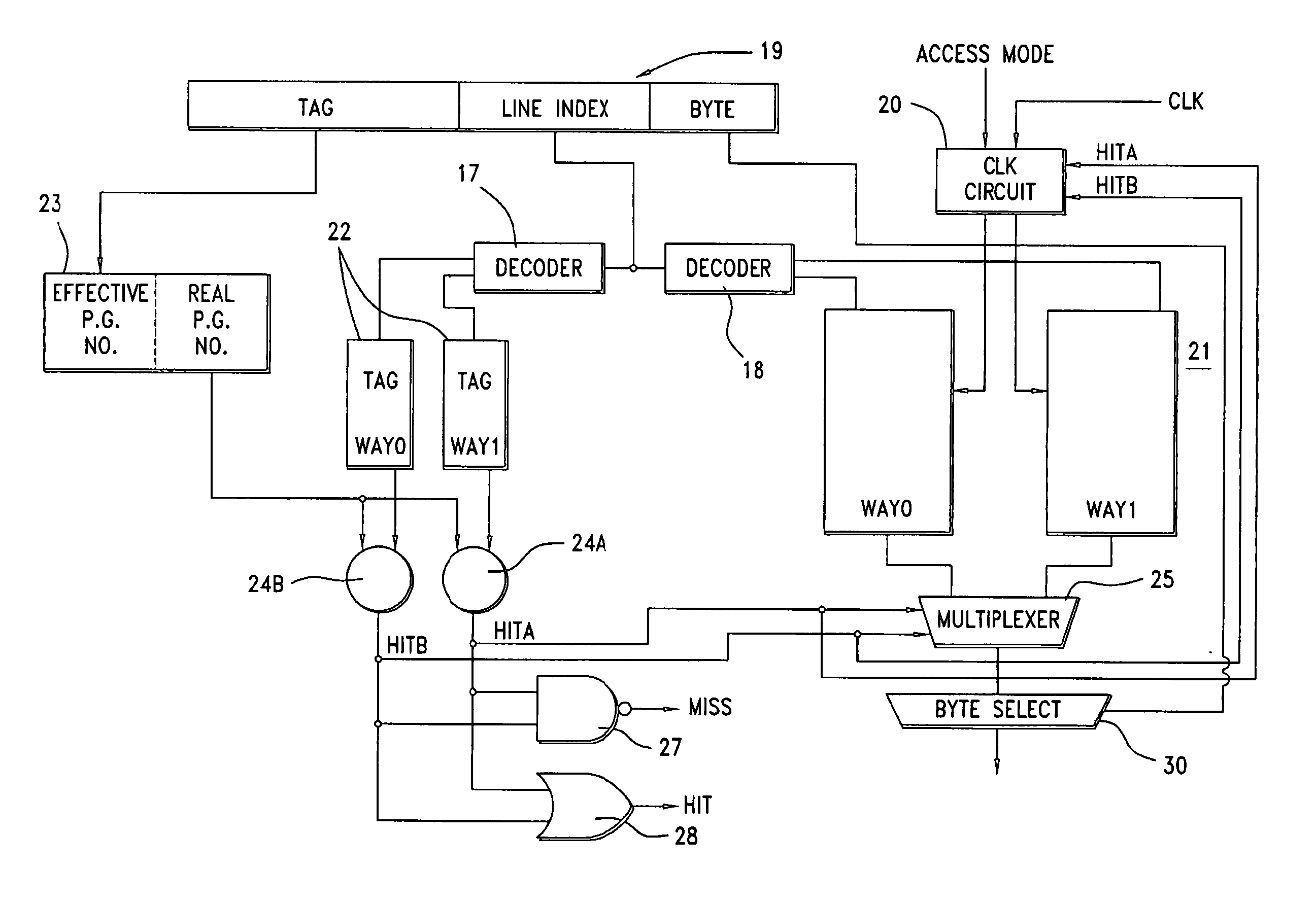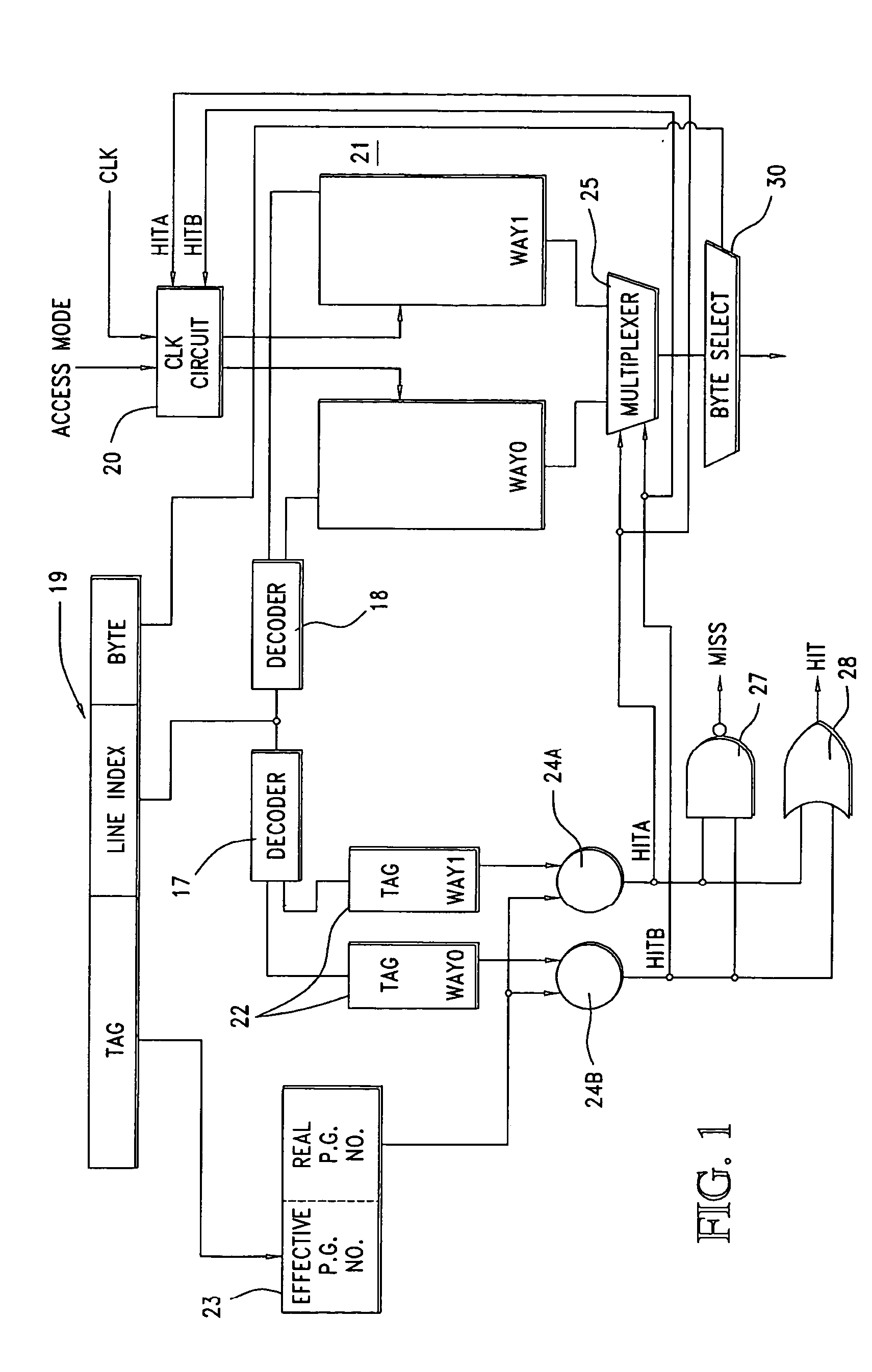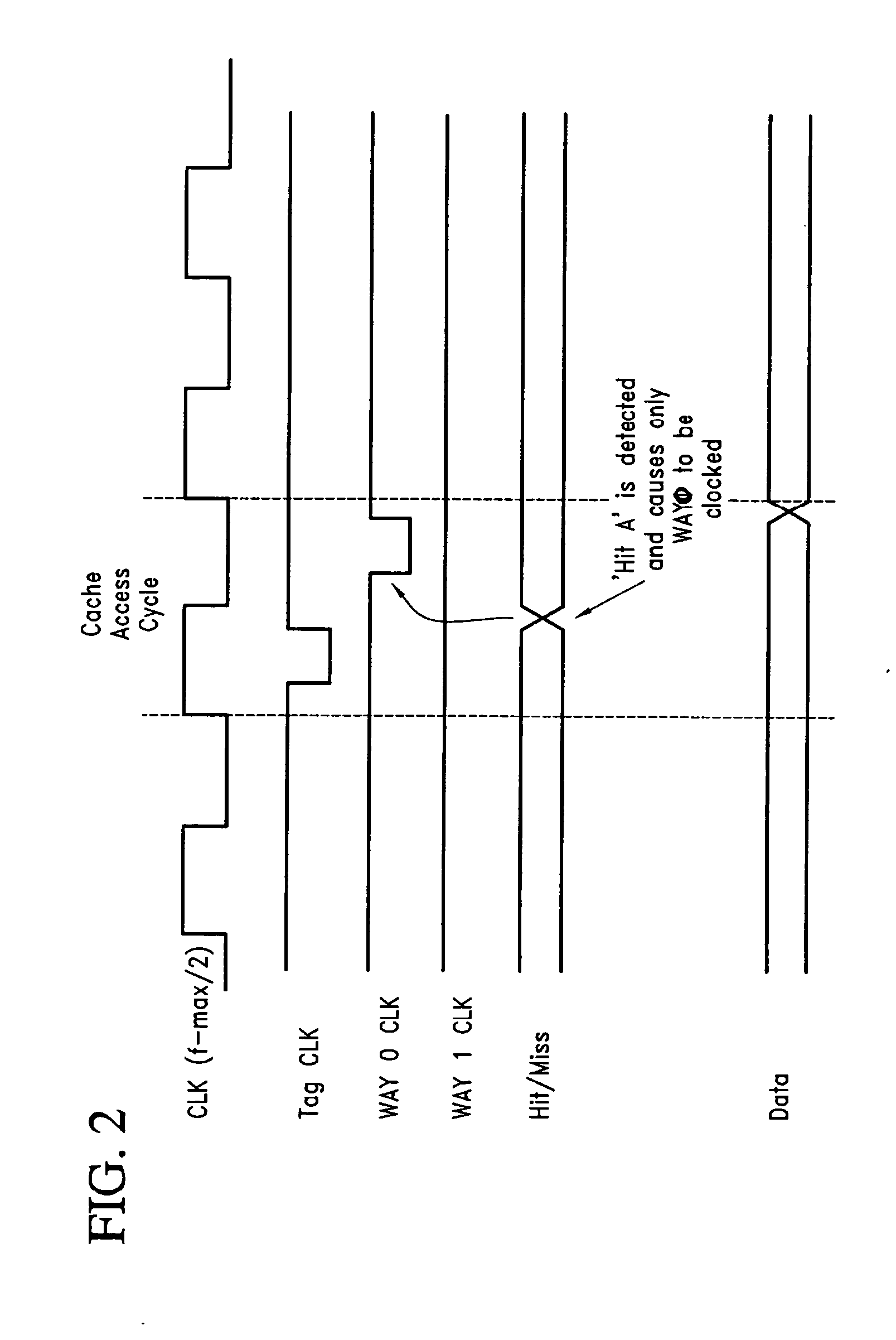Method and system for providing cache set selection which is power optimized
a cache set and power optimization technology, applied in the field of instruction and data caches, can solve the problems of significant waste of operational power, power consumption of prediction logic, and inability to guarantee 100% predictability, and achieve the effect of high access speed
- Summary
- Abstract
- Description
- Claims
- Application Information
AI Technical Summary
Benefits of technology
Problems solved by technology
Method used
Image
Examples
Embodiment Construction
[0016] Referring now to FIG. 1, a two way associative cache 21 is shown. Way 0, and way 1 comprise two SRAMs which produce first and second data outputs to a select multiplexer 25. The data cache memory 21 stores instructions, or other data necessary for a microprocessing system. The specific use of the data is not relevant to the invention's operation.
[0017] The cache 21 is accessed from a register containing an effective address 19. The effective address contains data representing a tag associated with each line of memory in way 0 and way 1, a line index and a byte number. The Line Index portion of the effective address identifies which line of the ways is to be accessed, and the byte identification data permits selection of a particular byte contained in a line of data.
[0018] For each line or row of data contained in way 0 and way 1, a tag in a corresponding row of tag memories 22 is provided. The Line Index addresses both tag memories and both ways 0, 1. The tag data stored in...
PUM
 Login to View More
Login to View More Abstract
Description
Claims
Application Information
 Login to View More
Login to View More - R&D
- Intellectual Property
- Life Sciences
- Materials
- Tech Scout
- Unparalleled Data Quality
- Higher Quality Content
- 60% Fewer Hallucinations
Browse by: Latest US Patents, China's latest patents, Technical Efficacy Thesaurus, Application Domain, Technology Topic, Popular Technical Reports.
© 2025 PatSnap. All rights reserved.Legal|Privacy policy|Modern Slavery Act Transparency Statement|Sitemap|About US| Contact US: help@patsnap.com



